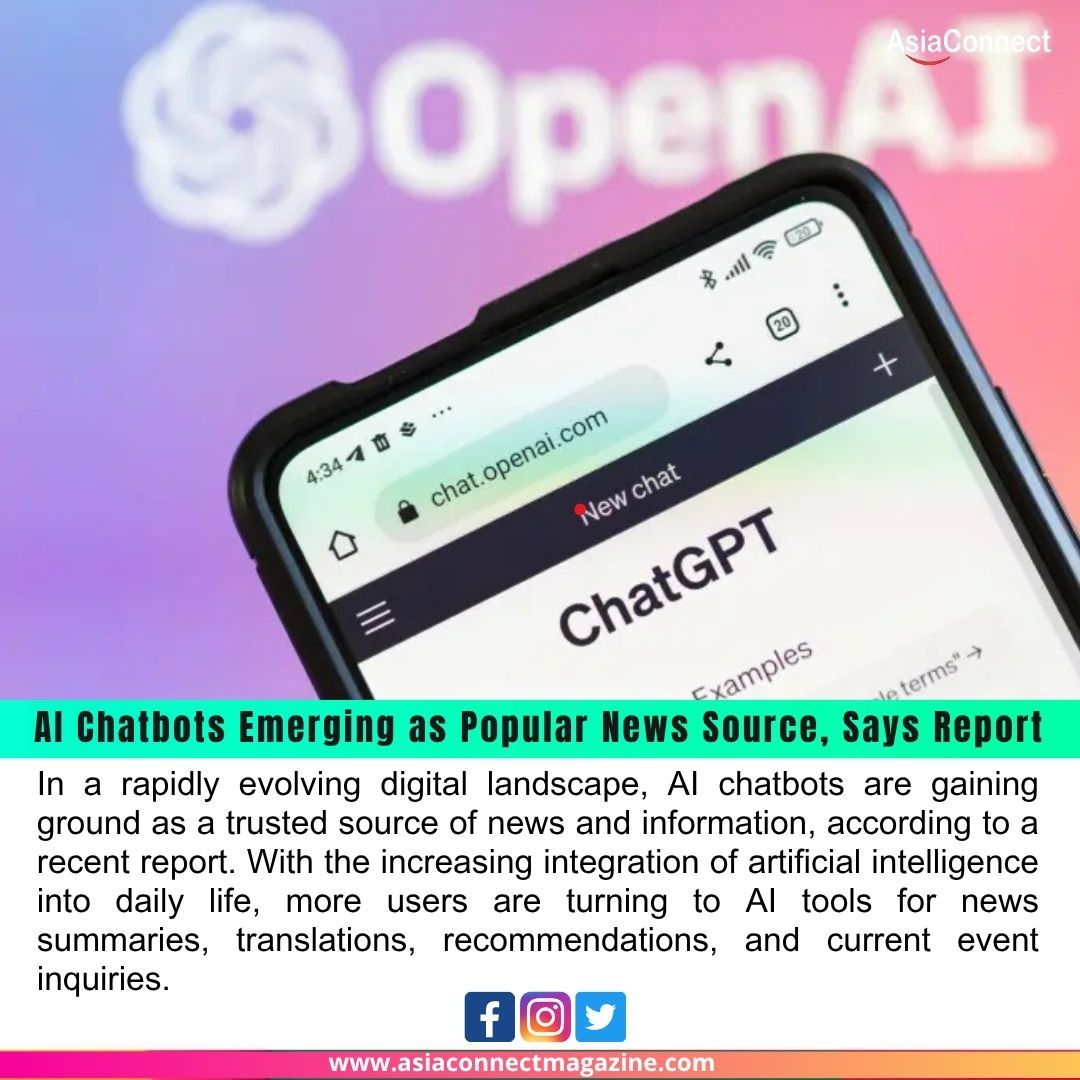In a rapidly evolving digital landscape, AI chatbots are gaining ground as a trusted source of news and information, according to a recent report. With the increasing integration of artificial intelligence into daily life, more users are turning to AI tools for news summaries, translations, recommendations, and current event inquiries.
The report highlights that a growing number of people prefer using AI chatbots over traditional news outlets for quick and personalized information. Among the most common uses of AI for news are summarization (27%), translation (24%), content recommendations (21%), and asking questions about current events (18%). These figures indicate a major shift in how audiences consume and engage with news content in 2025.
AI Chatbots and the Evolution of News Consumption
The convenience and speed offered by AI chatbots are redefining the way users access news. With platforms like ChatGPT, Google Gemini, and Microsoft Copilot, users can now receive instant, concise summaries of lengthy articles or breaking news, saving time and enhancing comprehension. These summaries help users grasp complex stories without sifting through multiple sources.
In multilingual societies, AI-powered translation features are proving essential. Around 24% of users rely on chatbots to translate news content into their native languages, promoting better accessibility and inclusivity in the digital news ecosystem.
Personalized News Recommendations
Another emerging trend is the personalization of news feeds through AI. By analyzing user behavior, preferences, and search patterns, AI chatbots can recommend news stories tailored to individual interests. This feature, used by 21% of respondents in the report, reflects the growing demand for relevant and filtered news content in an age of information overload.
Furthermore, 18% of users turn to AI chatbots to ask questions about ongoing events, political developments, or international affairs. This interactive element provides users with instant, contextual insights—something that static news articles or broadcasts often cannot deliver.
Trust and Accuracy: The Double-Edged Sword
While the adoption of AI in news delivery is on the rise, it also raises questions about accuracy, bias, and misinformation. AI tools depend on their training data and user input, which can sometimes lead to incomplete or inaccurate summaries. Nevertheless, developers are continually refining algorithms to improve fact-checking, source reliability, and contextual understanding.
For users, it’s essential to maintain media literacy and verify information across trusted sources, even when using AI tools.
The Future of AI in News
The rise of AI chatbots as a news source represents a significant turning point in digital media. As more platforms integrate AI capabilities, users can expect faster access to real-time news, multi-language support, and deeper personalization of content.
However, the role of human journalism remains irreplaceable in providing investigative depth, ethical accountability, and storytelling nuance. The ideal future may lie in a hybrid model, where AI enhances the reach and efficiency of traditional journalism, rather than replacing it.





